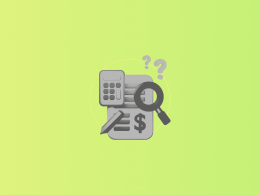Whether you’re a new business owner or a savvy veteran, having the appropriate information and business model in place is crucial for success. Since there are numerous models and methods you can use to run your company, it’s important to choose one that will help you achieve the results you’re looking for.
Planning the financial future of your company as well as its performance isn’t possible without analyzing overall costs and revenues. But are they enough? You’d better add unit economics to this equation!
If your company plans to make business decisions based on unit economics, you’ll want to have a firm understanding of what they are, how you may benefit, why you might want to calculate them per unit and per customer, and what metrics are essential to track. Here’s a look at the basics of unit economics.
Contents:
2. Why are unit economics important?
3. How to calculate unit economics?
4. How to track unit economics: Key metrics
5. How to track unit economics with Synder?
What are unit economics?
Unit economics are a specific business model which describes a company’s revenues and costs of a company in relation to an individual unit.
Companies that utilize this business method base many of their decisions around the “basic unit.” Unit, in this sense, refers to an element that the organization can create and sell that will add value to both customers and a company. For a SaaS startup, for example, such a unit is a customer or subscription, and an e-commerce business may identify a physical item as a unit. Your basic unit depends on the approach you take.
Why are unit economics important?
Now that you know what unit economics are, you might wonder why your company needs to calculate your economics in relation to a single unit and how they may help you grow your capital. Let’s take a closer look at what makes unit economics important:
- Unit economics let your company predict profits. Calculating economics on a per unit basis allows you to evaluate how profitable your business is when it boils down to selling one unit at a time. You may project how many units you should aim to produce as well as how soon you can expect to achieve profitability and forecast your development rate.
- Unit economics allow for choosing the right strategy to optimize your product. While analyzing a unit, a company should pay special attention to its variable and fixed costs. This analysis shows which units are worth your efforts and which you should lose, how successful the pricing policy is and how appropriate your marketing efforts are.
- Unit economics help your company to evaluate changes. Fluctuations in vital KPIs can demonstrate how valid the changes to your marketing and pricing strategies are. Based on KPIs, you may decide to increase or decrease the rate of changes.
- Unit economics give a clearer picture of your performance. With thorough understanding of your profitability per unit, you’ll be able to assess market sustainability and how viable your company is.
As you can see, unit economics have lots of benefits which may allow your business to develop at a faster rate. But how should you approach them?
How to calculate unit economics?
Before you can start calculating unit economics for your business, you need to decide which unit economics approach, or model, you’d like to use — “one item sold” or “one customer.” As you’ll see below, both models have their benefits and approach unit economics from a slightly different angle.
Let’s see what makes each model different.
“One Item Sold” Model
One way to model unit economics is to approach it from the unit side. In this method, you would accept that a unit is “one item sold” and determine the unit economics by calculating the contribution margin.
To calculate the contribution margin of a unit, you’d use the following formula:
| Contribution margin = Price per Unit – Variable Costs per Sale |
Variable costs are determined by the expenses your company incurs per unit you produce and deliver – how much you actually spend on materials, packaging, shipping to the end customer, etc.
This method provides a direct result and helps the leadership team quickly determine the revenue/cost per single unit.
“One Customer” Model
The “one customer” unit economics model requires more calculations and considers metrics such as customer lifetime value (CLV or LTV) and customer acquisition costs (CAC). Since it uses additional data, companies often use the “one customer” model more frequently.
To calculate unit economics with the “one customer” model, you’d use the following formula:
| Unit economics = Lifetime Value / Customer Acquisition Cost |
As the business unit here is a customer, it allows you to see the ratio between how much you spend to acquire a single customer and how much money they bring to your company in return throughout the entire time they spend with your organization.
It’s generally accepted that if your CAC exceeds LTV, your company must be losing money; your business is viable and sustainable if your LTV is higher than CAC; but if your LTV and CAC are equal, then your business is stagnant.
Calculation of unit economics per item or per customer models aren’t mutually exclusive. In fact, you might want to use both in order to get a more detailed look at your performance and plan ahead. But what metrics should you track? Are LTV and CAC enough?
How to track unit economics: Key metrics
Depending on the model you use, there are several metrics you’ll need to complete the calculations for. Since most companies use the “one customer model,” LTV and CAC will be the most critical metrics. However, other factors such as churn rate, gross profit, and retention rate are also important to know if you want to track unit economics.
Lifetime value (LTV)
One of the two components of “one customer” unit economics is lifetime value or LTV. The LTV equation provides insight into the average amount of money a business makes per customer throughout the client relationship. For instance, the LTV for a subscription company would be from the initial sign-up to the date the customer cancels their subscription.
The LTV formula is as follows:
| LTV = Total Revenue / Number of Customers |
If you want to calculate LTV manually, you need to calculate your company’s total revenue in a given period, determine the total number of customers during this period, and divide the total revenue by the number of customers.
Customer acquisition cost (CAC)
Customer acquisition cost or CAC, equates to the total investment required to acquire one customer and makes up the other half of the “one customer” model. Even though customer acquisition cost is essential for unit economics, it can be a valuable metric for business owners outside of the model too.
The formula for calculating CAC is as follows:
| CAC = Total Cost of Sales and Marketing / Number of Customers Acquired |
Manual calculation of CAC requires knowing how much you’ve spent on sales and marketing in a given period and counting the total number of customers for the same period. The ratio between these figures is your CAC.
Understanding CAC is extremely important, because if you’re spending too little, no new customers want to deal with you, and if you’re spending too much, you’re losing money on the customers and the money they bring back to your business doesn’t cover your costs.
Other important unit economic metrics
Even though lifetime value and customer acquisition cost are two of the most significant metrics in the unit economics equation, there are other factors you should consider. Below are some of the most common secondary metrics that companies often use in their unit economic method.
- Average customer lifetime (ACL). This indicator shows how much time on average a customer stays with a company before they churn. In order to calculate ALT, you need to divide your churn rate figure by 1. ALT also plays an important role in calculating LTV.
- Churn rate. This indicator represents the percentage of customers who cancel subscriptions to your service during a certain period.
- Retention rate (R). This percentage shows the number of customers who keep their subscription and stay with your company during the period.
- Number of transactions (T). This is the amount of transactions in a given period. Keep in mind that not all customers make transactions in a said period – the numbers differ.
- Number of customers (C). This is the total number of customers who subscribe to your service or buy from you in a selected period.
- Total revenue (TR). This is the total amount of money you get from your customers in a given period.
- Gross profit (GP). This is the amount you get from subtracting your cost of sales from the total revenue (TR) of your company.
- Average revenue per user (ARPU). The number you get by dividing your total revenue (TR) in a selected period by the number of customers (C).
- Average order value (AOV). This is the number you get when you divide the total revenue (TR) of your business by the total number of orders.
- Average gross margin (AGM). This is what you get by dividing your company’s gross profit (GP) by your total revenue (TR).
- Gross margin per customer lifespan (GML). This is the amount of profit per each customer during the entire time they spend with your company. It differs from LTV as it takes into consideration not total revenue (TR), but profit margin.
- Discount rate (D). This amount represents the rate of your return on investment.
- Time to return the investment (TROI). This is how much time it usually takes to return the money you spent on acquiring a customer (CAC).
Having these numbers calculated gives you access to additional indicators. There are two ways you can model LTV in unit economics: predictive LTV and flexible LTV.
Predictive LTV allows you to predict future behavior of your customers, hence the name.
The equation you’d want to use is as follows:
| Predictive LTV = (T x AOV x AGM x ALT) / C |
Flexible LTV, in its turn, takes into account potential changes in company’s revenues and leaves room for variation.
In order to calculate flexible LTV, use the formula:
| Flexible LTV = GML x (R/(1 + D – R)) |
How to track unit economics with Synder?
Business and market intelligence in unit economics focuses on analyzing KPIs, spotting trends and assessing your business performance. Keeping tabs on numerous unit economics metrics might seem overwhelming, but why not delegate these tasks to automated software?
Synder Insights makes calculating and tracking unit economics metrics effortless! The software provides you with a set of detailed adjustable reports on such KPIs as LTV, AOV, gross profit, and many more (Check out the full list of available reports). No need to calculate the numbers and enter information manually! Synder automatically captures data (including transaction details and customers’ emails, for example) from all connected business units – e-commerce platforms and payment gateways – and generates instant reports in a few clicks. Granular data allows for quicker analysis and faster changes in your strategies!
Book a demo to understand how Synder Insights can scale your business, or experience the flow yourself with our free 7-day trial! Tracking unit economics shouldn’t be a problem!
! See how Synder Insights can help you calculate unit economics of one unit in our article ‘The Unit Economics of a T-Shirt: Economics of One Unit Explained’
Final words on unit economics
Understanding unit economics is absolutely essential to any company at any stage – be it a startup at an early stage of development, or an established e-commerce store looking to increase profitability. Unit economics allow businesses to evaluate how profitable and sustainable they are, measure how successful their current strategy is, assess the rate and feasibility of changes and plan ahead. Approaching costs and revenues from both customer and unit sides will give you a competitive edge and ensure stable and reliable growth.

.png)





